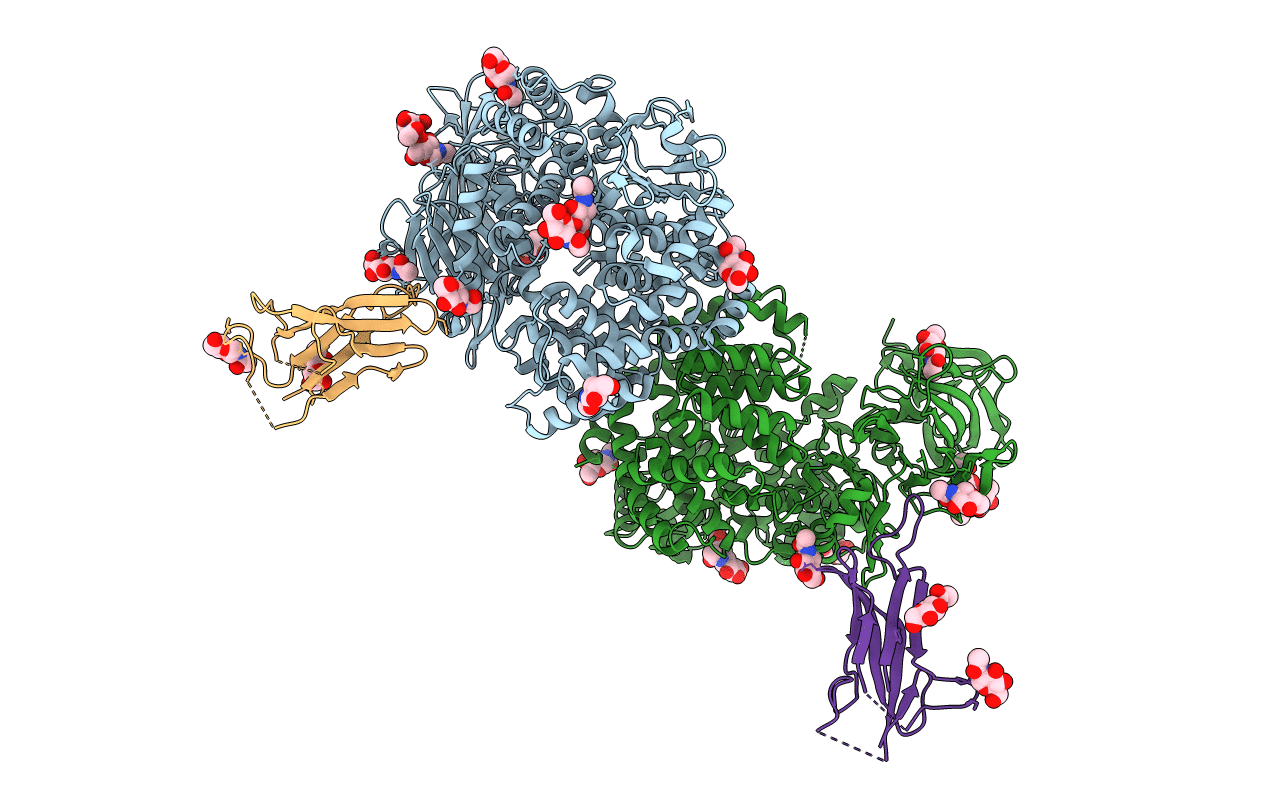
Deposition Date
2019-09-02
Release Date
2019-11-13
Last Version Date
2024-11-13
Entry Detail
PDB ID:
6U7F
Keywords:
Title:
HCoV-229E RBD Class IV in complex with human APN
Biological Source:
Source Organism:
Homo sapiens (Taxon ID: 9606)
Human coronavirus 229E (Taxon ID: 11137)
Human coronavirus 229E (Taxon ID: 11137)
Host Organism:
Method Details:
Experimental Method:
Resolution:
2.75 Å
R-Value Free:
0.22
R-Value Work:
0.19
R-Value Observed:
0.19
Space Group:
P 1 21 1


